Posts by: Hamish Johnston
Schrödinger’s Brexit, ‘The Elements’ remix, physics referees and American football
By Hamish Johnston
On Tuesday I was rushing to finish writing a news story about quantum superposition and got a phone call out of the blue from Roger Sawyer, who is deputy editor on BBC Radio 4’s afternoon news and current affairs programme PM. He had the brilliant idea that the meme of “having your Brexit cake and eating it too” had some sort of connection to quantum superposition – and wanted some advice from Physics World.
View all posts by this author | View this author's profile
Chasing gravitational waves in song, physicists on Broadway, the ‘impossible space engine’ returns
By Hamish Johnston
These days anyone making a major breakthrough in physics is expected to follow-up with a cheesy music video. So give it up for The Mavericks and “Chasing the Waves”, which chronicles the quest to detect gravitational waves – which culminated in LIGO’s success earlier this year. I don’t much about this video, but it seems to have been filmed at the University of Glasgow, which is part of the LIGO collaboration.
View all posts by this author | View this author's profile
Inspiring young physicists, telescope buyer’s guide, time-travelling pyramid builders
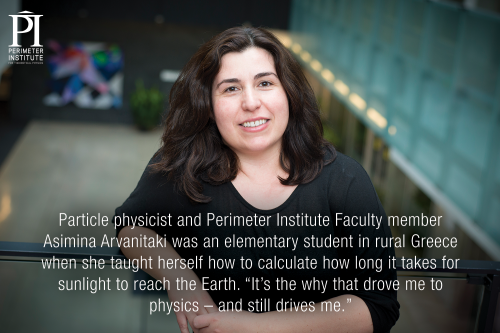
Sunlight calculator: Asimina Arvanitaki. (Courtesy: PI)
By Hamish Johnston
Have you ever wondered what inspires talented physicists to pursue careers in physics? To try to answer that question, the Perimeter Institute for Theoretical Physics (PI) in Canada has produced a set of tiles that explain how some famous physicists – and some up-and-coming stars – became hooked on physics at a young age. An early love of back-of-the-envelope calculations seems to have set the stage for the PI’s Asimina Arvanitaki as she explains in the above tile. Can you guess which Nobel laureate used to stare at a clock pendulum for hours to try to figure out how it worked? The answer to that teaser and much more can be found in “How great scientists get hooked on science”.
View all posts by this author | View this author's profile
Mars mission gains currency in India, nuclear obliteration and a super-duper moon
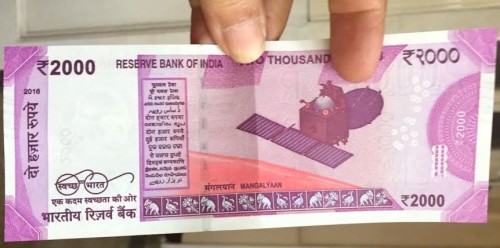
The Reserve Bank of India’s new Rs2000 banknote features the country’s first interplanetary spacecraft, Mangalyaan. (Courtesy: Ronnie Commissariat)
By Tushna Commissariat, James Dacey and Hamish Johnston
Nearly three years after it was successfully launched into orbit around Mars, India’s Mangalyaan orbiter has begun a new type of circulation – on a newly issued Indian banknote. Earlier this week, Indian prime minister Narendra Modi unexpectedly announced that the country’s ubiquitous Rs500 and Rs1000 notes would no longer be legal tender, effective immediately. New Rs500 and Rs2000 notes have instead be issued, the latter featuring the spacecraft.
View all posts by this author | View this author's profile
Robots at arXiv, physicist runs for US president, Einstein emojis galore
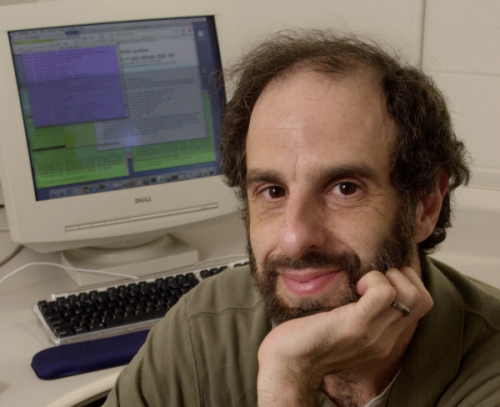
Preprint pioneer: Paul Ginsparg in 2002, long before arXiv received 10,000 papers per month. (Courtesy: MacArthur Foundation)
By Hamish Johnston
Last month the arXiv preprint server received more than 10,000 papers – the first time in the history of the physics paper depository. While arXiv papers are not peer reviewed, they are checked to ensure that they are “of interest, relevance and value” to the scientific community – which arXiv promises to do within 24 h of submission. So how do they do it? Surely someone doesn’t read every word of every paper? The answer can be found in “What counts as science?”, which appears in Nautilus. arXiv was set up in 1991 by the physicist Paul Ginsparg, who explains how the service uses machine learning to sort the wheat from the chaff – something that has attracted controversy.
View all posts by this author | View this author's profile
Frightening physics films, a furry physics doodle and an epic pub crawl
By Hamish Johnston
There are still 10 days to go until Halloween, but some physicists can’t resist getting into the spirit a bit early. Over at Symmetry, Kathryn Jepsen suggests a few scary physics films that would make for a spooky movie night on 31 October. They’re not actually real films, but rather a series of posters dreamt up at Chicago’s Sandbox Studio in collaboration with the illustrator Ana Kova. My favourite is Poltergauss (right), because trying to understand magnetism is terrifying.
View all posts by this author | View this author's profile
Music for aliens, Doctor Strange’s science adviser, the physics of Bob Dylan
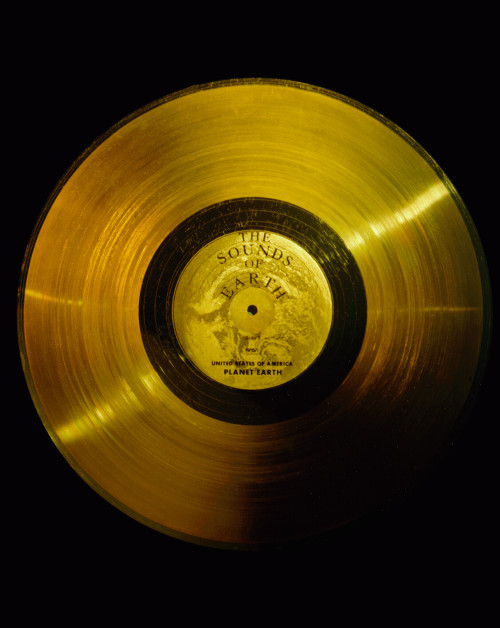
Sounds of Earth: An original golden record. (Courtesy: NASA)
By Hamish Johnston
An online initiative to reissue Carl Sagan’s golden record, which was attached to NASA’s Voyager 1 and 2 craft, has so far raised a whopping $1.1m, smashing its $198,000 goal. The campaign was created in September by David Pescovitz, editor and managing partner at the technology news site Boing Boing, after teaming up with Timothy Daly from Amoeba Music in the US, who was the original producer of the record, as well as US graphic designer Lawrence Azerrad. The original LP, which was created in 1977, contains sounds of the Earth along with recorded greetings and a mix of music, and has been unobtainable for decades, having been available only on CD-ROM in the early 1990s. Now that the cash has been raised, the golden record will be released next year as an LP to mark the 40th anniversary of the Voyager launches. So how much will it set you back? It’s yours for only $98, what a bargain.
View all posts by this author | View this author's profile
The physics of Luke Cage’s skin, meet the ‘mathekniticians’, lessons from the only girl in a physics class
By Hamish Johnston
Marvel’s Luke Cage is a superhero television series that has just debuted on Netflix. Cage’s superpower is that his skin is impervious to bullets and other projectiles fired at him by villains. But could it be possible to create a skin-like layer that would allow someone to emerge unscathed from machine gun fire? The Nerdist’s Kyle Hill has the answer in the above video.
View all posts by this author | View this author's profile
LIGO physicists favourites for Nobel prize, physics superstar tournament, and how long does it take to win a Nobel?
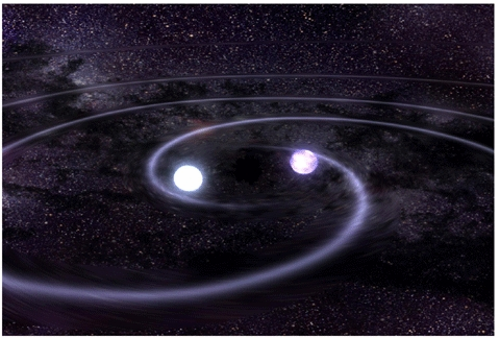
Prize winning: will the detection of gravitational waves win this year’s Nobel? (Courtesy: Caltech/MIT/LIGO Lab)
By Hamish Johnston
The first week of October is nearly upon us and the question on almost every physicist’s lips is “who will win this year’s Nobel Prize for Physics?”. The people’s favourite for 2016 seems to be the physicists who pioneered the LIGO gravitational-wave detectors. In February 2016 LIGO researchers announced that they had made the first ever detection of a gravitational wave – from two merging black holes. A few months later, a second detection was announced.
Normally, Nobel nominations are closed in January so it’s possible that LIGO missed the boat. However, both the first and second detections were actually made in 2015 – with the results subsequently published in 2016. So the LIGO pioneers could have been nominated before the deadline as the collaboration already knew it had detected gravitational waves. It’s all pure speculation, of course, as each year’s deliberations are kept top secret for 50 years.
So who could be claiming the prize for LIGO? Three people favoured by pundits are Rainer Weiss, Kip Thorne, and Ronald Drever. Drever and Weiss played crucial roles in designing and building LIGO, whereas Thorne calculated what gravitational waves would look like to the detector.
View all posts by this author | View this author's profile
Mercury now orbits between Mars and Jupiter, fun with liquid nitrogen, 3D printing an asteroid
By Hamish Johnston
He may have taken the name of a planet, but the late rock star Freddie Mercury now has an asteroid named after him. 17473 Freddiemercury, is about 3.4 km in diameter and resides in the main asteroid belt between Mars and Jupiter. The designation was made by the Minor Planet Center of the International Astronomical Union and announced on Sunday by Mercury’s former Queen band mate and astrophysicist Brian May. In the above video, May gives some background to the naming, which was done to celebrate the 70th anniversary of Mercury’s birth. And if you watch to the end, you will see a clip of 17473 Freddiemercury streaking across the sky with Queen rocking in the background.
View all posts by this author | View this author's profile
